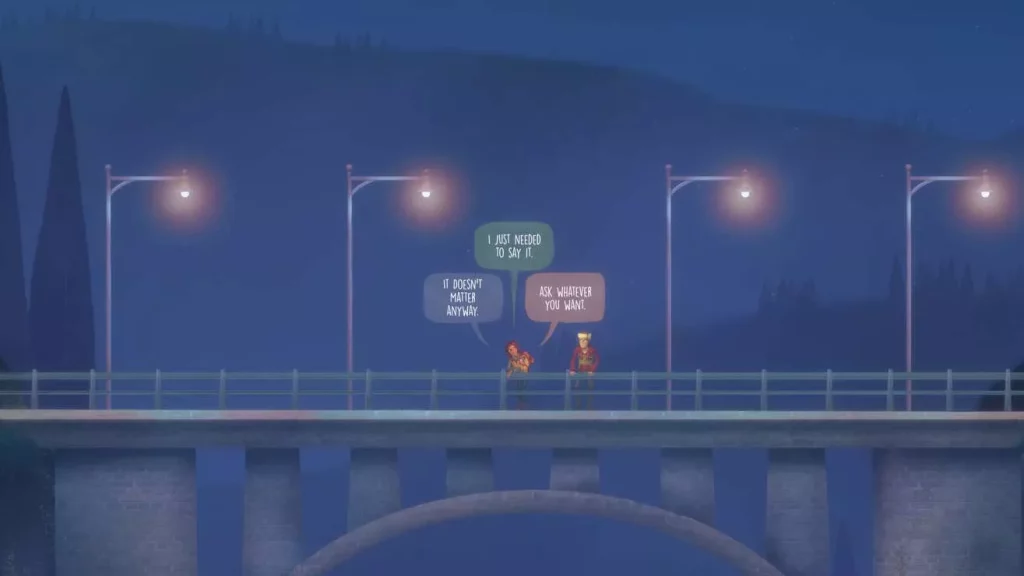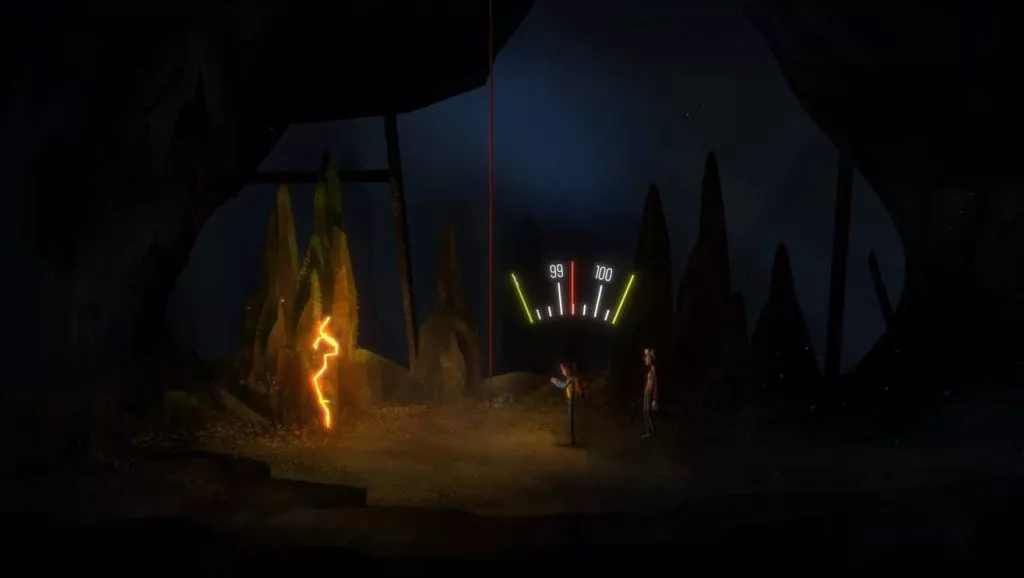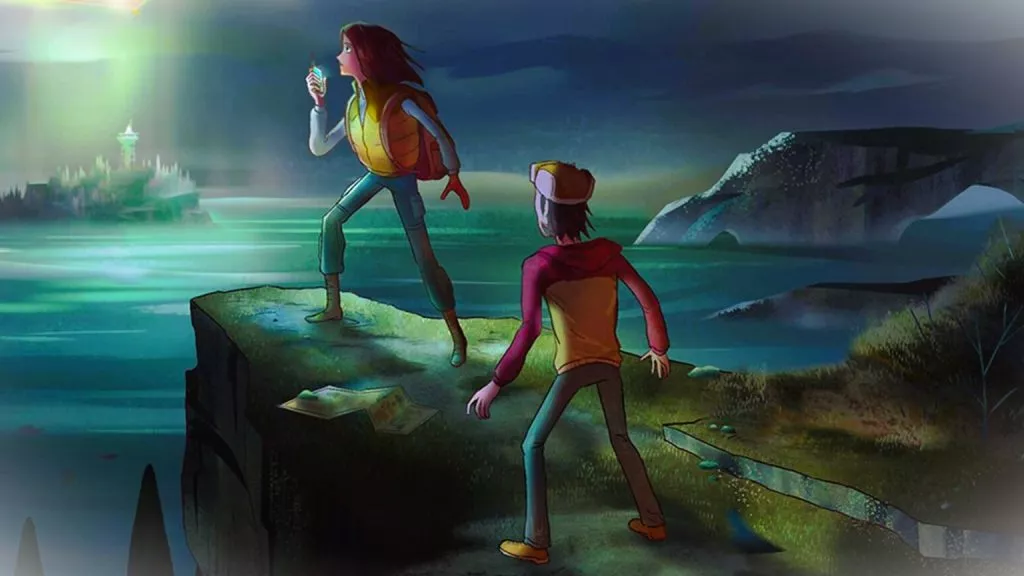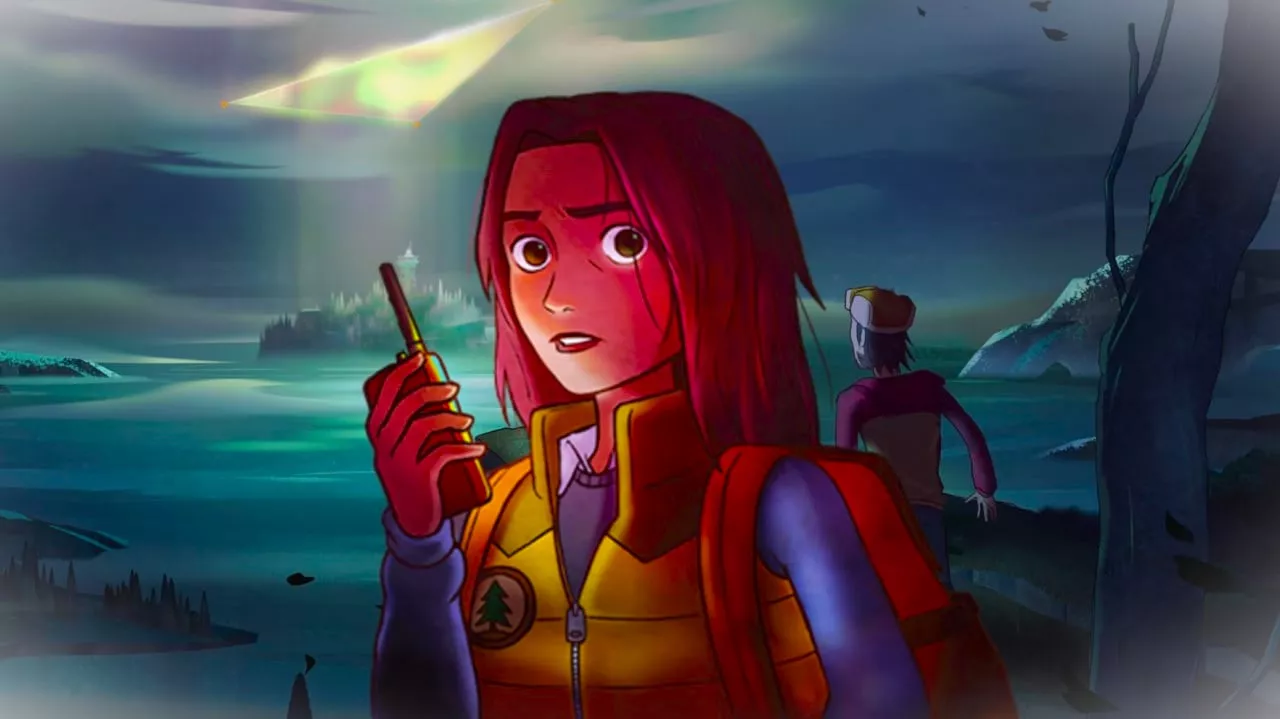In Oxenfree II: Lost Signals, a captivating thematic twist unfolds, distinguishing it from its excellent 2016 precursor. While the initial game centered around Alex and her friends’ coming-of-age escapade, confronting an uncertain future, Lost Signals shifts its focus to 30-something Riley Poverly, who finds herself trapped in the trappings of adulthood. Seeking a fresh start, she returns to her childhood haven, the mining town of Camena.
This unique reversal breathes new life into the sequel, offering both a sense of novelty and familiarity. Unlike a mere rehash with a new set of teenagers, Lost Signals delves into Riley’s personal struggles, resonating with those experiencing a midlife crisis as time rushes towards their thirties. Her internal turmoil revolves around questioning life’s choices and pondering the impact she’s had on others and the world.
Tasked with an intriguing assignment, Riley and her old high school acquaintance, Jacob, venture through Camena, placing antennas to track enigmatic signals disrupting electronic equipment. However, their mission takes an unexpected turn when peculiar events unfold on Edwards Island, the backdrop of the first game, prompting them to investigate further. Although Lost Signals can be experienced as a standalone story, I highly recommend playing the original game beforehand to grasp the significance of Edwards Island. Understanding the ties to the past will prevent feeling lost from the outset. (The original game’s secret ending briefly hinted at Camena, but here, it is extensively explored.) While Riley’s tale is her own, it intertwines with references and appearances from characters in the previous game, providing essential context you wouldn’t want to miss. Playing the preceding installment will enrich your journey through Lost Signals.

The captivating narrative of Lost Signals unfolds in a mesmerizing 2D scrolling gameplay, immersing players in the stunning hand-drawn landscapes of Camena and beyond. As you guide Riley through this world, you’ll encounter occasional environmental puzzles that require tuning her radio to match specific frequencies. Additionally, the allure of adventure platformer elements tempts you to explore off the beaten path, seeking collectibles along the way.
Lost Signals primarily adopts the format of a visual novel, where much of your time is spent engaging in conversations and making choices from various dialogue options. These decisions carry weight, influencing the outcome of the story. Seemingly insignificant conversations about parents can have far-reaching consequences, depending on how Riley responds. Will you opt for a mean-spirited and dismissive approach, or will you show kindness, expecting favors to be returned in the future?
As Riley and Jacob delve deeper into their investigation of the enigmatic signals plaguing Camena, their sanity comes under threat. Alongside other peculiar phenomena, red-eyed phantoms materialize out of nowhere, delivering cryptic messages and fragmented sentences filled with static-laden words, leaving an unsettling feeling in their wake each time you encounter them. The atmosphere becomes increasingly eerie and mysterious as the plot thickens, making Lost Signals a riveting and immersive experience for players.

The tension of encountering inexplicable horrors leaves Riley and Jacob on edge, leading to captivating and nonchalant dialogue as they attempt to preserve their sanity. Surprisingly, even seemingly mundane discussions like whether libraries should reintroduce late fees for overdue books become engaging in the context of their predicament.
Their conversations are more than just idle chit-chat; they reveal the depths of their characters and the evolving dynamic between them. Jacob, who has never known life outside Camena, contrasts with Riley, who seeks a fresh start. Yet, they share the common struggle of searching for purpose in life. The way Riley interacts with Jacob and other characters plays a pivotal role in determining the outcome of the story. Disregarding Jacob’s attempts to bond or being excessively rude to him may alter the course of their journey, potentially impacting whether he remains by her side until the end.
The seamless flow of conversations, enhanced by an excellent script and phenomenal voice acting, lends authenticity and realism to the characters’ interactions. This masterful execution makes the game’s narrative even more immersive and emotionally resonant, drawing players deeper into the world of Lost Signals.

Lost Signals surpasses its predecessor with a much-improved pacing, swiftly delving into ghostly and supernatural events that captivate and keep players hooked. Despite this quick progression, the game skillfully retains the quiet, charming moments that characterized the original. The banter between Riley and Jacob as they search for antenna locations echoes the camaraderie found in Alex and her friends’ interactions from the first game.
One notable enhancement in Lost Signals is the user interface, addressing the confusion some players experienced with the previous game. Clear indications now guide players, such as prominent icons like a big fat B with a circle around it when approaching interactable objects, or other face buttons appearing during dialogue options, making the gameplay experience smoother and more intuitive.
The time-travel elements in Lost Signals add depth and intrigue to the story. Like Alex before her, Riley experiences time loops that offer glimpses into Camena’s dark history. Puzzles involving tuning her radio to match space-time tears enable her to travel to the past, providing a compelling gameplay mechanic akin to Titanfall 2’s time gauntlet. While the implementation is engaging, players may wish for these elements to be used more frequently.
The introduction of Parentage, a cult exploiting Camena’s supernatural phenomena for its own ambitions, serves as the new primary antagonist. Unlike a terrifying entity akin to Resident Evil’s Umbrella Corporation, Parentage presents a more unsettling tone, with their interests seemingly tied to astrology rather than malevolence. Jacob’s observations about the cult’s seemingly harmless nature add to the intrigue and mystery surrounding their involvement in the story.
Overall, Oxenfree II: Lost Signals masterfully weaves together elements of horror, time travel, and captivating dialogue, creating an immersive experience that surpasses its predecessor in both pacing and gameplay mechanics.

The progression of the story in Lost Signals reveals that Parentage’s members are more misguided than inherently sinister, yet their methods still pose risks to lives. The organization serves as a crucial avenue for exploring the game’s themes of loss and yearning. Unlike being villains for the sake of being evil, Parentage’s goals provide a contrast to Riley’s journey. As Riley grapples with the consequences of her past decisions and seeks a path forward, some members of Parentage cling to their own past, yearning to relive certain moments repeatedly.
The game’s different endings expertly exemplify these themes. The casual conversations between Riley and Jacob during their exploration of Camena foreshadow their fates. Jacob yearns for a meaningful legacy, seeking to be remembered for something significant. Meanwhile, Riley stands at a crossroads, with a promising future ahead, but she must confront her past and make choices that allow her to move forward.
As the motivations of Parentage become clearer throughout the narrative, players may find themselves sympathizing with its members. This newfound understanding leads to surprising choices and outcomes, where players might find themselves giving Parentage what they seek. The game’s exploration of these themes and the ability to evoke empathy for its characters, even the antagonistic ones, is a testament to its storytelling prowess.
The emotional resonance and relatability of the characters and their struggles, coupled with the desire to revisit the past, make siding with Parentage a unique experience. While many games feature sympathetic villains, Lost Signals manages to go beyond that, compelling players to actively align with the perspective of a once-antagonistic group. This level of player engagement and emotional investment in the narrative is a testament to the game’s exceptional storytelling and character development.
Absolutely! Oxenfree II: Lost Signals proves that a successful sequel doesn’t always require a complete overhaul. By building upon the strong foundation set by its predecessor, the game manages to deliver an excellent story with well-developed characters. The smaller yet significant changes, such as improved pacing, smoother controls, and engaging gameplay ideas, contribute to the sequel’s distinct identity and elevate the overall experience.
Retaining the heart and charm of the original while introducing fresh elements ensures that Lost Signals resonates with players who loved the first game, as well as newcomers to the series. The seven-year gap between the two titles allows for a natural progression in the narrative and gameplay, making Lost Signals a worthy continuation of the supernatural coming-of-age tale that captured players’ hearts all those years ago.
